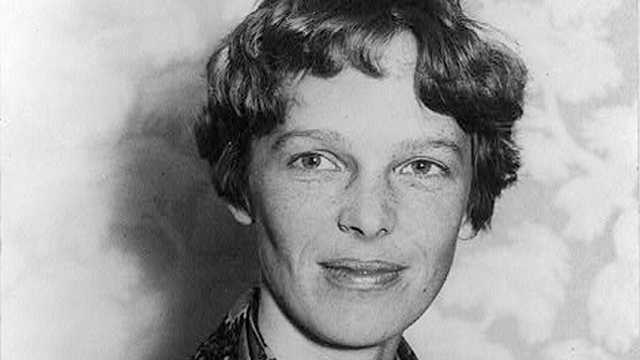On March 12, 1912, Juliette Gordon Low made history by founding the first Girl Scouts troop in the United States in her hometown of Savannah, Georgia. This moment marked the beginning of what would become one of the largest and most influential organizations for girls in the world, dedicated to empowering young girls through leadership, community service, and outdoor activities.
The founding of the Girl Scouts was a pivotal moment in the history of youth organizations, as it provided girls with opportunities for personal growth, development, and education at a time when societal expectations for women were very different.
The Inspiration Behind the Girl Scouts
Juliette Gordon Low, known as “Daisy” to her friends and family, was deeply inspired by her experiences in both England and the United States. During her time in England, Low met Sir Robert Baden-Powell, the founder of the Boy Scouts, and was immediately taken by the organization’s mission of teaching young boys valuable skills such as citizenship, leadership, and outdoor survival. She saw the potential for a similar organization for girls in the United States.
At the time, girls were largely excluded from similar organizations or were encouraged to stay within traditional gender roles, focusing on domestic skills rather than leadership or community service. Low was determined to provide girls with the same opportunities for personal development that boys had through scouting.
In 1911, inspired by the Boy Scouts, she gathered a group of girls in Savannah to start the first troop. Her vision was to create an organization where girls could learn about community service, nature, leadership, and self-reliance while building friendships and empowering each other.
The First Girl Scouts Troop
On March 12, 1912, Juliette Gordon Low officially founded the first Girl Scouts troop in Savannah. She recruited 18 girls, aged 6 to 14, to be a part of this historic first meeting. Low’s initial goals for the organization were modest but revolutionary for the time. She wanted to create an opportunity for girls to engage in outdoor activities such as hiking, camping, and nature exploration, as well as learn about the importance of community service and citizenship.
The girls of the first troop learned practical skills such as sewing, cooking, and gardening, but also engaged in activities that emphasized leadership, cooperation, and self-confidence. Low’s personal enthusiasm and commitment to the cause quickly gained the support of many others, and her small troop in Savannah rapidly expanded.
The Spread of the Girl Scouts Movement
After founding the first troop in Savannah, Juliette Gordon Low worked tirelessly to expand the Girl Scouts movement. In 1913, just one year later, the organization grew beyond Georgia and spread across the United States. With Low’s leadership, the Girl Scouts movement flourished and quickly gained support from communities and girls eager to participate in its activities.
Low’s vision for the Girl Scouts was progressive and inclusive. She saw the organization as a way to break down barriers for girls and provide them with skills that would help them become leaders in their communities and in society. Her commitment to helping girls of all backgrounds, including those from marginalized communities, played a key role in the expansion of the Girl Scouts.
The Girl Scouts’ Evolution
As the Girl Scouts grew, so did its scope and activities. The organization embraced the values of citizenship, environmental stewardship, leadership, and community service. Girls were encouraged to participate in a wide range of activities, including earning badges in subjects such as first aid, cooking, camping, and civic engagement.
The organization’s structure and programs have evolved over the years, with girls continuing to learn new skills, explore new areas of interest, and engage in service projects that benefit their communities. Today, Girl Scouts can earn badges in subjects like STEM (science, technology, engineering, and math), financial literacy, and entrepreneurship, reflecting the changing needs and interests of modern girls.
One of the most iconic elements of the Girl Scouts is its cookie program, which was introduced in 1917 and became a central part of the organization. Selling cookies not only helps raise funds for Girl Scouts activities but also teaches valuable skills like entrepreneurship, money management, and marketing.
Juliette Gordon Low’s Legacy
Juliette Gordon Low’s legacy lives on through the Girl Scouts, an organization that has impacted the lives of millions of girls and women. Low’s vision of empowering girls, teaching them leadership skills, and giving them opportunities to grow into confident, capable adults has had a lasting influence on generations of women. The Girl Scouts have inspired women to pursue careers in a variety of fields, become active members of their communities, and take on leadership roles in business, politics, and other areas.
Low’s commitment to inclusion and her dedication to helping girls from all walks of life thrive have been integral to the Girl Scouts’ success. The organization continues to promote the values of diversity, equity, and inclusion, ensuring that girls from all backgrounds have access to the same opportunities for growth and empowerment.
The Girl Scouts Today
Today, the Girl Scouts is one of the largest organizations for girls in the world, with millions of members across the United States and in more than 90 countries. The organization offers girls a safe and supportive environment where they can develop new skills, make lifelong friends, and learn about leadership, community service, and global citizenship.
The Girl Scouts continue to carry on Juliette Gordon Low’s legacy by adapting to the changing needs of modern girls while staying true to the core values of the organization. From outdoor adventures to community service projects and academic pursuits, the Girl Scouts empower girls to reach their full potential and make a positive impact on the world.
Conclusion
March 12, 1912, marked the beginning of a movement that would forever change the lives of millions of girls. When Juliette Gordon Low founded the first Girl Scouts troop in Savannah, Georgia, she laid the groundwork for an organization that would empower generations of young girls to become leaders, innovators, and changemakers. Today, the Girl Scouts continue to uphold Low’s vision of a world where girls have the skills, confidence, and opportunities to thrive and make a difference. Through her dedication and foresight, Juliette Gordon Low created a lasting legacy that still inspires girls to aim high and lead with courage, compassion, and creativity.







What do you think?
Show comments / Leave a comment